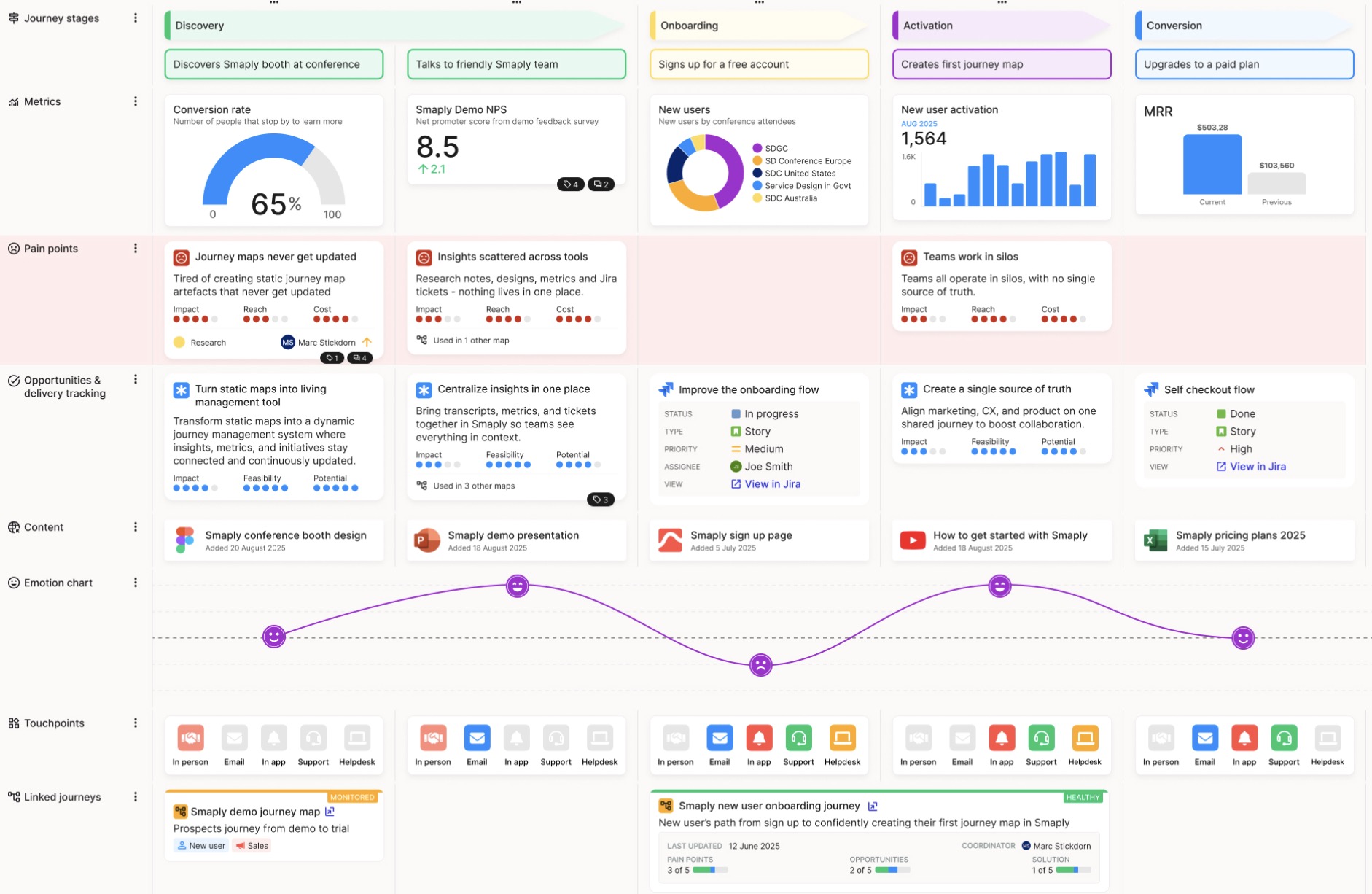Brand Strategy | CX
September 22, 2025 | Nikki Bisel

Marketing used to be thought of as a loudspeaker: a way to blast a message and hope it reached the right ears. Today, the companies people trust and return to don’t just shout, they listen, they observe, and they design. That design work isn’t abstract; it’s grounded in customer journey mapping.
At its core, journey mapping is the practice of laying out the full path someone takes with your brand, from the first spark of awareness to expansion or, in some cases, exit. Done well, it doesn’t just tell you what’s happening. It shows you where the experience lives up to the brand promise and where it falls short. In other words, it is the key diagnostic tool for aligning marketing with customer experience.
Customer journey mapping matters because customers don’t experience your business in silos. They don’t separate your website from your sales team, or your emails from your support staff. Every touchpoint contributes to one story: Do I trust this company?
This is more than an abstract question. Trust is the currency of growth. If there’s a mismatch—for example, your ads promise simplicity but onboarding feels complicated—trust erodes. If the proof matches the promise—ads, website, sales, onboarding, retention—trust compounds. The difference shows up not just in customer satisfaction, but in measurable outcomes like lifetime value, referrals, and revenue per marketing dollar spent.
Think of it this way: marketing gets someone to the table, but the journey determines whether they stay, return, and bring their friends. Without mapping, you may be investing heavily in acquisition while quietly losing customers later in the journey.
Journey mapping sits at the intersection of marketing strategy and customer experience. Marketing is about more than reach; it is about resonance. Customer experience is about more than service; it is about consistency. Journey mapping bridges the two.
Here’s how it plays out:
In every case, journey mapping doesn’t just diagnose, it aligns. It ensures marketing tells the truth and CX delivers it. Without that alignment, even the most polished campaign can turn into a broken promise.
The real power of journey mapping isn't just solving problems, it’s designing delight. Mapping reveals the exact points where a little extra clarity, responsiveness, or empathy can turn a neutral experience into a moment of loyalty.
A thoughtful onboarding process can reduce first-week frustrations and increase adoption rates. A personalized communication at the retention stage can remind customers of value they already have, reducing churn. A seamless upsell at the expansion stage can feel like a natural next step instead of a pushy sales tactic.
Each of these small improvements, uncovered through journey mapping, compounds into major growth over time. They build the kind of customer experience that transforms one-time buyers into long-term advocates.
One of the hidden powers of journey mapping is the way it brings order to everything. Most companies have marketing that looks like a junk drawer: scattered vendors, half-finished campaigns, a mix of channels with no clear connection, and messaging that doesn’t always reach the right audience. The same thing happens in CX, where support, onboarding, and follow-up often operate in silos.
Journey mapping cuts through the noise by laying every channel and every funnel phase on a single canvas. Paid ads, SEO, email, sales calls, onboarding flows, customer service scripts. Suddenly you can see how they interact. Instead of guessing whether your PPC spend is aligned with your nurture emails or whether your website messaging matches your sales pitch, you have one unified view.
That clarity transforms more than just marketing. It makes the whole company easier to manage. You’re no longer trying to fix a campaign in isolation or troubleshoot a support issue without context. You can see the system as a whole, identify where energy is being wasted, and reallocate resources to where they will actually build trust and drive growth.
In other words, journey mapping doesn’t just diagnose customer problems, it organizes your entire growth engine.
The marketplace is noisy. Short-term tactics might win attention, but sustainable growth comes from loyalty. Customers are savvier, more skeptical, and more willing to switch. At the same time, data signals are harder to capture with privacy changes, meaning you can’t just rely on analytics dashboards. You need qualitative understanding of what customers actually feel and experience.
That is why journey mapping has shifted from “nice to have” to business imperative. Without it, you are flying blind—optimizing campaigns without knowing whether the underlying experience is keeping the promises you make. With it, you are designing with intention: making every touchpoint part of a coherent, trustworthy story that customers want to be part of again and again.
























